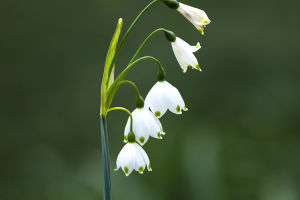Lilacs, with their sweet fragrance and vibrant clusters of flowers, are a beloved addition to many gardens.
These hardy shrubs are not only beautiful but relatively easy to grow with the right care.
Below, we’ll walk through the steps to plant, nurture, and maintain lilacs so they flourish year after year.
Choosing the Right Spot
Lilacs thrive in full sunlight—at least six hours per day is ideal. If grown in shaded areas, they may produce fewer blooms. Select a location with well-drained soil, as lilacs dislike soggy roots. Slightly alkaline soil (pH 6.5 to 7.0) is best for optimal growth. Adding compost to the planting hole can improve soil quality, giving the lilacs a good start.
Planting Lilacs
The best time to plant lilacs is either in early spring or fall when the weather is cooler. Dig a hole deep and wide enough to accommodate the roots comfortably, ensuring that the root ball sits at ground level. Water thoroughly after planting to encourage root establishment. If planting multiple shrubs, space them 5-15 feet apart to allow airflow, which helps prevent fungal diseases.
Lilac – How to grow and care for it
Video by Trim That Weed - Your Gardening Resource
Watering and Fertilizing
Young lilacs need regular watering to develop strong roots, but once established, they become relatively drought-tolerant. Water deeply once a week, especially during dry spells. Avoid over-fertilizing; too much nitrogen can encourage foliage growth at the expense of flowers. A light application of 10-10-10 fertilizer in late winter or early spring works well, alongside organic compost to enrich the soil.
Pruning for Healthy Growth
Pruning is essential to keep your lilac bush healthy and blooming year after year. Lilacs bloom on old wood, so pruning should be done immediately after they finish flowering in spring. Remove spent flowers and any dead or damaged branches. For older shrubs, consider a rejuvenation prune—cutting the plant down to about 8 inches. This will promote vigorous new growth, though it may take a few years for blooms to return.
Common Pests and Diseases
Lilacs can occasionally suffer from powdery mildew, especially in humid conditions. Improving air circulation through pruning can help reduce the risk. Aphids, scale insects, and leaf borers can also become nuisances, but these pests are generally easy to manage with insecticidal soap or neem oil.
With their timeless charm, lilacs are a rewarding shrub for any garden. By following these simple planting and care tips, you’ll enjoy their fragrant blooms for years to come. So, get your hands dirty, and soon enough, you’ll have a lilac bush in full bloom, transforming your garden into a fragrant paradise.


